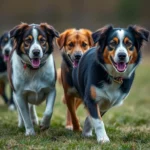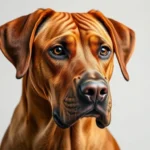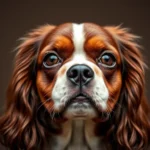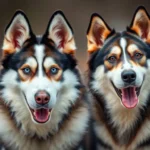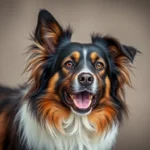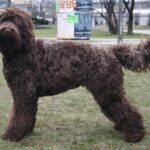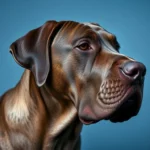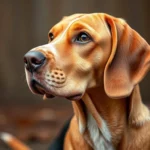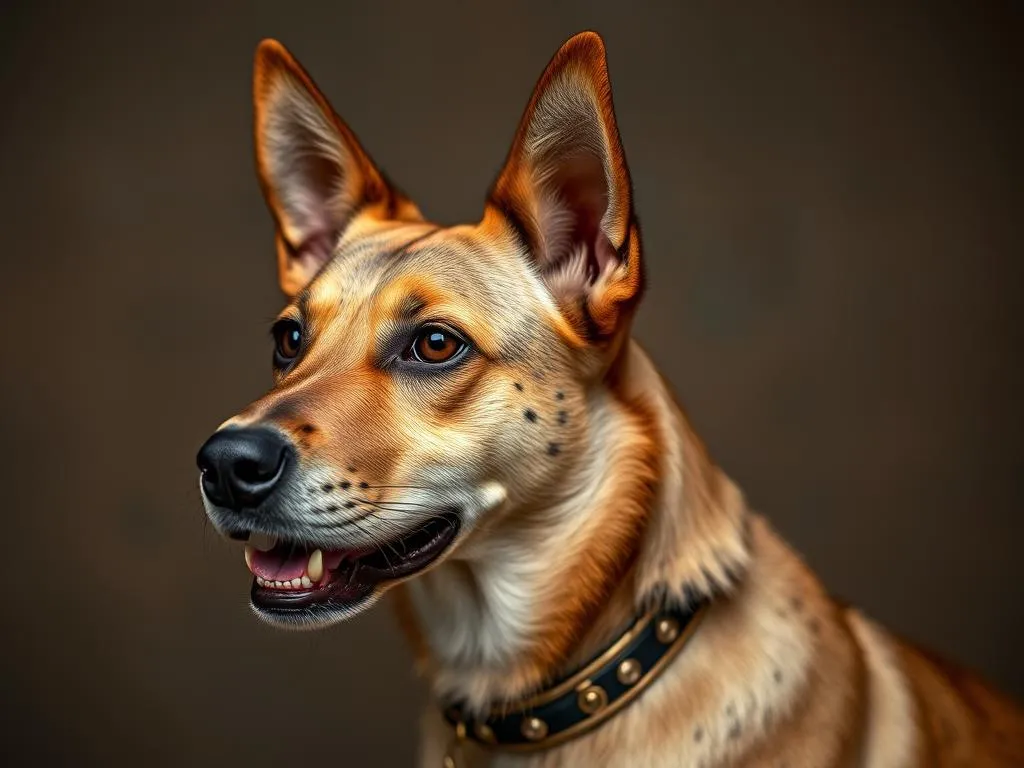
Introduction
Egyptian dog breeds hold a unique place in the canine world, reflecting both the rich history and cultural significance of Egypt. Understanding these breeds provides insight not only into their characteristics and needs but also into their roles throughout history. Dogs have been companions, hunters, and even symbols of status in ancient Egypt, and their legacy continues to influence modern breeds today. This article will explore the notable Egyptian dog breeds, their historical backgrounds, grooming and care requirements, and what it’s like to live with these remarkable animals.
Historical Background of Dog Breeding in Egypt
Ancient Egypt and Dogs
Dogs were integral to ancient Egyptian culture, serving various roles from hunters to beloved pets. They were often associated with deities, such as Anubis, the god of the afterlife, who was depicted with a canine head. Dogs provided companionship and protection, and their presence in daily life is well-documented through art and hieroglyphs. Ancient Egyptians revered dogs so much that they even mummified them, ensuring they had a place in the afterlife.
The Evolution of Egyptian Dog Breeds
The transition from ancient breeds to the modern classifications we recognize today has been shaped by trade, migration, and adaptation. As Egypt interacted with other cultures, various breeds were introduced, influencing the genetic pool of Egyptian dog breeds. Over time, these interactions led to the development of distinct breeds that maintained their unique characteristics while adapting to changing environments and roles.
Notable Egyptian Dog Breeds
Pharaoh Hound
The Pharaoh Hound is perhaps the most famous of the Egyptian dog breeds. Known for its stunning appearance, this breed typically has a sleek body, long legs, and large, upright ears. Their coat is short and can be found in various shades, predominantly in a rich tan with white markings.
Temperament and Behavior Traits: Pharaoh Hounds are known for their friendly and outgoing nature. They are intelligent and can be quite independent, which makes training a rewarding but sometimes challenging experience. They thrive on companionship and enjoy being part of family activities.
Historical Significance: This breed’s history is believed to date back to ancient Egypt, where they were used for hunting game such as rabbits and birds. Their resemblance to the dogs depicted in ancient art strengthens their connection to the past.
Care and Grooming Needs: The grooming needs of a Pharaoh Hound are minimal due to their short coat. Regular brushing can help reduce shedding, and they should be bathed as necessary. They require regular exercise to maintain their energy levels and overall health.
Basenji
The Basenji is another noteworthy breed associated with ancient Egypt, although its origins lie deeper within Africa. Known for their unique vocalizations, often described as yodels, Basenjis are small, athletic dogs with a short, fine coat that can come in various colors.
Unique Traits: One of the most fascinating aspects of the Basenji is its aversion to barking, which is why they are often referred to as “barkless dogs.” Their independent nature can make training a challenge, but they are highly intelligent and curious.
Historical Context: The Basenji has been a companion to hunters in Central Africa for centuries, and its ties to Egypt can be traced back through art and historical texts, illustrating their importance in ancient society.
Health Concerns and Maintenance Tips: Basenjis are generally healthy dogs, but they can be prone to certain genetic conditions. Regular check-ups and a proper diet can help maintain their health, along with sufficient exercise to keep them mentally and physically stimulated.
Egyptian Mau
The Egyptian Mau is a striking breed that stands out due to its unique spotted coat and striking green eyes. This medium-sized cat-like dog is known for its agility and grace, often resembling the wild cats of the region.
Distinctive Features: The Egyptian Mau is the only naturally spotted breed of domesticated cat, and its history is deeply intertwined with ancient Egyptian culture. They were revered as sacred animals and were often depicted in art alongside pharaohs.
Connection to Ancient Egyptian Royalty: The Mau is celebrated in many ancient texts and artworks, symbolizing grace and beauty. Their connection to royalty underscores their significance in Egyptian history.
Training and Socialization Needs: Egyptian Maus are intelligent and highly trainable. They benefit from early socialization and positive reinforcement training methods to help them develop into well-adjusted pets.
Salukis
The Saluki is one of the oldest dog breeds, tracing its lineage back to ancient Egypt. Known for their elegance and remarkable speed, Salukis are lean, athletic dogs that were historically used for hunting game in the desert.
Characteristics and Appearance: Salukis have a distinctive appearance, often characterized by long legs, a narrow head, and a silky, flowing coat. They come in various colors, including fawn, white, and grizzle.
Historical Importance: As hunting dogs, Salukis were highly prized by royals and nomadic tribes alike. Their ability to run at great speeds made them exceptional hunters in the challenging terrain of the Egyptian desert.
Nutrition and Exercise Requirements: Salukis require a balanced diet to maintain their energy levels, and they thrive on regular exercise. Daily walks and opportunities to run are essential for their well-being.
Other Lesser-Known Egyptian Breeds
While the Pharaoh Hound, Basenji, Egyptian Mau, and Saluki are the most recognized Egyptian dog breeds, several other breeds deserve mention:
- Baladi: A native breed that is often found in rural areas of Egypt. They are known for their adaptability and resilience, serving as loyal companions and watchdogs.
- Tazi: Similar in appearance to the Saluki, the Tazi is a sighthound traditionally used for hunting in Central Asia and parts of Egypt.
These lesser-known breeds also hold cultural significance and serve important roles in their communities.
Care and Maintenance of Egyptian Dog Breeds
General Care Requirements
Caring for Egyptian dog breeds involves understanding their specific needs. Basic requirements include:
- Food: A balanced diet rich in protein is crucial for maintaining their health and energy levels.
- Water: Fresh water should always be available to prevent dehydration, especially in hot climates.
- Shelter: Providing adequate shelter is essential, particularly during extreme weather conditions.
Regular veterinary care, including vaccinations and check-ups, is vital to ensure a long and healthy life for your dog.
Grooming Needs by Breed
Grooming requirements can vary significantly among the different Egyptian dog breeds. Here are some general tips:
- Pharaoh Hound: Minimal grooming; regular brushing to manage shedding.
- Basenji: Requires little grooming; regular brushing helps keep their coat healthy.
- Egyptian Mau: Moderate grooming needs; regular brushing helps maintain their coat and reduce shedding.
- Saluki: Requires brushing to remove dead hair, especially during shedding seasons.
Seasonal grooming considerations should also be taken into account, particularly for breeds that may be more affected by the heat.
Training and Socialization
Training methods suitable for Egyptian dog breeds often focus on positive reinforcement techniques. Early socialization is critical to help them adapt to various environments and people. Teaching commands and basic obedience can foster a strong bond between you and your dog.
Living with Egyptian Dog Breeds
Compatibility with Families
When assessing the suitability of Egyptian dog breeds for family life, it’s important to consider their temperament. Most of these breeds are known for their friendly and loyal nature, making them excellent companions for families. However, energy levels and exercise needs may vary, so it’s crucial to choose a breed that fits well with your family’s lifestyle.
Exercise and Activity Levels
Understanding the exercise requirements of each breed is essential for their well-being. For example:
- Pharaoh Hound: Requires daily walks and playtime to expend energy.
- Basenji: Benefits from regular exercise but can adapt to smaller living spaces.
- Egyptian Mau: Active and playful; enjoys interactive play sessions.
- Saluki: Needs ample space to run and exercise, making them better suited for homes with yards.
Establishing a daily exercise routine is key to keeping your dog healthy and happy.
Adapting to Different Living Environments
Egyptian dog breeds can adapt to various living environments, but some may thrive better in specific settings. Here are some tips:
- Apartment Living: Choose breeds like the Basenji that can adapt well to smaller spaces. Regular outdoor exercise is essential.
- Homes with Yards: Breeds like the Saluki benefit from having space to run and play freely.
Managing energy levels is crucial, especially in confined spaces. Engaging in interactive play and providing mental stimulation can help keep your dog entertained.
Adoption and Rescue of Egyptian Breeds
Finding Egyptian Dog Breeds
If you’re considering adding an Egyptian dog breed to your family, there are several resources available for adoption. Local shelters and breed-specific rescues often have dogs in need of homes. Supporting these organizations helps promote responsible pet ownership and ensures that these unique breeds continue to thrive.
Considerations Before Adopting
Before adopting an Egyptian dog breed, it’s essential to assess your lifestyle compatibility. Consider factors such as:
- Activity Level: Ensure that you can meet the exercise requirements of the breed.
- Financial Considerations: Account for the costs associated with food, healthcare, and training.
Success Stories and Testimonials
Many families have successfully adopted Egyptian dog breeds, sharing their positive experiences and the joy these dogs bring to their lives. Encouraging community involvement and awareness about adoption can help more dogs find loving homes.
Conclusion
Understanding Egyptian dog breeds offers a glimpse into a world rich with history and cultural significance. Each breed has its unique characteristics and needs, making them special companions in modern times. By preserving these breeds and their heritage, we ensure that they continue to thrive and enrich our lives. Whether you choose to adopt or simply appreciate these incredible dogs, their stories and contributions to human life are invaluable.
